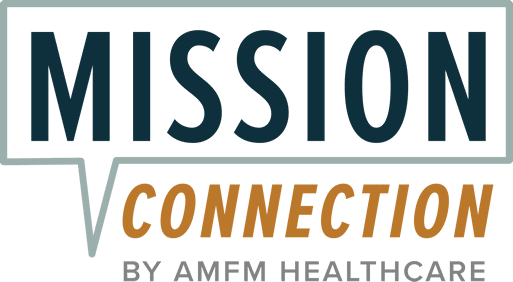Oversharing in Adults: Why It Happens and What to Do About It

Many of us have been in situations where we’ve left a conversation wondering why we talked so much and shared so many details about ourselves. Maybe we spoke to our coworker and told them all about our recent divorce, trauma-dumped on a first date, or posted something overly vulnerable online.
It’s easy to blur the line between being open and saying too much. What starts as honesty can sometimes become a nervous flood of information or a desire to be understood. When we begin to know where this impulse comes from, we learn to respond with compassion and curiosity rather than shame.
This page aims to explore the oversharing mental health issues can cause and how you can learn to manage it. It does so by discussing:
- What oversharing is and the signs you might be doing it
- The reasons for oversharing
- Ways to avoid oversharing and therapy for emotional regulation support
- Where to find professional support
- Answers to commonly asked questions about oversharing and mental health

What Is Oversharing?
Oversharing is when we disclose too much personal information for the situation or circumstances at hand. Essentially, it happens when we feel the need to connect or we’re trying to avoid uncomfortable emotions. Oversharing is not uncommon, and we’re not always doing it intentionally.
Sharing too much can look different for everyone. For you, it might be talking too much about a recent divorce or breakup with an acquaintance. For another, it could be telling a new date all about their childhood traumas. However, if we’re not aware that we’re oversharing, it can be difficult to spot the signs.
Signs You Might Be Oversharing
When we understand the signs we might be oversharing, we can move away from judgment and toward realizing that our communication is trying to express something.
You might be oversharing if you…
- Feel anxious or regretful after a conversation or social media post
- Share deeply personal experiences or information with someone else before we’ve established trust with them
- Notice that people tend to change the subject or appear uncomfortable when we’re talking to them
- Try to fill the silence out of fear of rejection or nervousness
- Delete or edit social media posts that later seem like “too much”
Sharing too much doesn’t always mean we’re bad with boundaries. It often means we’re craving connection and understanding.
Reasons We Overshare
We may also share too much because it connects us to each other. When we interact socially, our brains release oxytocin and dopamine, the same chemicals tied to bonding and relief.1 In that moment, sharing feels good. The problem arises when the feeling of being connected isn’t mutual or sustainable, leaving us feeling exposed instead of understood.
Further, sometimes we talk too much, not because we’re careless, but because we’re afraid silence will confirm our fears of being ignored or not being enough. In other words, there are many reasons why we might overshare – and these include the following mental health issues.
To Find Relief From Anxiety
Oversharing is not always due to a simple lack of boundaries; it’s anxiety. People with anxiety often find it soothing to talk. When the nervous system is activated, words act like a pressure valve, releasing tension and bringing a temporary feeling of calm. But while oversharing may offer some relief, it can lead to a kind of “vulnerability hangover” later, when we become self-conscious about what and how much we’ve said.
Trauma and Boundary Issues
When we experience trauma, oversharing (also called trauma dumping) can be a way to unload our difficult experiences onto others.2 We don’t often do this on purpose. It’s more likely that we have a difficult time knowing where safe boundaries exist.
With trauma and oversharing, our early experiences may have taught us that being open was the only way to be acknowledged or believed. We might also share too much because we’re trying to take control and create safety, or maybe we’re trauma dumping as an unintentional way to seek validation or sympathy. Unfortunately, these disclosures can feel more exposing when they’re one-sided and not a mutual exchange of personal information.
People-Pleasing or Fear of Rejection
Sharing too much can develop as a form of people-pleasing, especially if we fear rejection. By offering personal stories, we provide a way to prove we’re open, relatable, and trustworthy. Beneath that impulse often lies the fear of being dismissed or of seeming cold or distant. By overexplaining or overexposing, we’re coping with social stress and trying to secure belonging, even when it costs us comfort.
Neurodivergence and Impulse Control Differences
Oversharing is common in people with ADHD, autism, or other forms of neurodivergence because of issues with impulsivity, hyperactivity, or executive functioning. It’s not a lack of awareness, but rather a difference in processing, where thoughts, enthusiasm, or empathy arrive faster than self-censorship.3 In these cases, oversharing reflects an authentic desire to connect rather than a disregard for boundaries.
Digital and Cultural Influences
Social media culture can blur boundaries of what’s “too much.” For instance, social media rewards us for being vulnerable, where the more personal we get, the more engagement we have.4 This expectation can change the way we measure connection, where we link being seen and accepted with online presence. Though sharing online can normalize openness, it can also create pressure to “perform” vulnerability rather than experience it honestly.
How to Stop Oversharing and Build Healthier Boundaries
Pausing Before You Share
Most oversharing happens when a rush of emotion pushes the words out before we have time to think. Take one slow breath before you speak and ask yourself what you’re hoping to get out of sharing the information. If the answer is that you need to feel heard or because you’re overwhelmed, it might be better to step away, breathe, or write out what you want to share first. Giving yourself a chance to pause means you’re honoring your emotions enough to decide when and how they’re shared.
Practicing Skills for Processing Emotions
Practice processing your emotions before sharing them. Using strategies like journaling, mindfulness, or voice-memoing can give us space and perspective to process our feelings before sharing them with someone else.5
Building Tolerance for Silence and Space
A lot of us overshare because silence feels uncomfortable and threatening. It gives us too much space for the discomfort. But silence is also where real understanding can live. Before you respond in a conversation, try sitting in the quiet for a few beats. Notice how the discomfort changes when you don’t rush to fill it.
Revisiting Your Relationship With Validation
Sometimes we share too much because we’re looking for reassurance. We want to feel seen and heard, and know we’re accepted. It’s human nature to want to feel connected and accepted. But trying to gain validation through oversharing tends not to last very long. Real acceptance comes from reminding ourselves that our stories matter, even if we don’t tell them all at once.
Therapy for Communication Skills and Healthy Boundary Setting
We can understand where these impulses come from and get BPD boundaries help by engaging in evidence-based therapies like the following.
Cognitive Behavioral Therapy (CBT)
CBT is about identifying and challenging automatic thoughts that contribute to our issues. With CBT, we can learn to identify the patterns that drive us to overshare, whether it’s thinking that if we don’t share enough, people will lose interest. Or if we stop talking, we won’t matter. By reframing these beliefs, CBT teaches us that pauses and boundaries don’t weaken connection – they strengthen it.
Dialectical Behavior Therapy (DBT)
DBT gives us tools to manage intense emotions and improve communication.6 These skills are especially helpful for those with BPD needing boundary management help. DBT stresses the importance of checking in with our emotions before we speak and expressing our needs clearly without inundating the conversation.
Mind-Body Practices
Mind-body practices are about connecting how our thoughts and emotions feel within our bodies. These practices, like mindfulness and somatic approaches, teach us to listen to what our bodies are trying to tell us before oversharing. For instance, we might notice a tightening in our chest, a racing heart rate, or an anxiety around filling the silence. Pausing and giving ourselves room to reflect helps us manage our emotions before reacting.7
Mission Connection: Building Healthier Communication and Boundaries
Many people who struggle with boundaries are trying to be understood, accepted, or loved. At Mission Connection, we understand that oversharing is about connection. Using evidence-based approaches such as DBT, EMDR, and mindfulness, we help you slow down the impulse to overexplain, find comfort in silence, and develop confidence in your ability to communicate authentically.
If you’re ready to rebuild your communication patterns from a place of trust and safety, reach out to the team at Mission Connection today. We will work with you to ensure your words become a source of strength, not stress.

FAQs About Sharing Too Much
If you still have some questions or concerns about impulsive communication issues, the following answers to frequently asked questions may help.
1. How Is Oversharing a Trauma Response?
Oversharing can be a trauma response as a way to seek connection, create feelings of intimacy, or protect yourself by pushing people away. It’s a part of the fawn response, in which you over-disclose to appease others and avoid rejection, conflict, or harm.
2. Why Do I Overshare When I’m Anxious or Nervous?
In moments of anxiety, the brain often misinterprets silence as danger. Talking becomes a form of self-soothing – a way to regulate discomfort. So people with social anxiety and oversharing tendencies may find themselves overexplaining to prevent rejection. Learning emotional regulation skills through CBT or mindfulness can help you tolerate that discomfort without oversharing.
3. Can Relationship Skills Therapy Help With Oversharing?
Yes, therapy that focuses on relationship skills can help you with oversharing. When we learn how to communicate effectively and manage boundaries, we may not feel the need to share too much. Active listening and being open to feedback are skills we can practice to help us build stronger relationships and connect with others in an authentic way.
4. Does Mission Connection Help With Oversharing and Trauma Dumping?
Yes, we’re here to help you manage your urges and impulses to share too much. With compassionate, evidence-based care, we’ll help you navigate challenges like social anxiety and oversharing, trauma-related disclosure, and boundary confusion. Our goal is to help you communicate with more authenticity and intention.
References
- Fineberg, S. K., & Ross, D. A. (2016). Oxytocin and the social brain. Biological Psychiatry, 81(3), e19–e21. https://doi.org/10.1016/j.biopsych.2016.11.004
- Cassata, C. (2024, May 21). When Oversharing Turns into Trauma Dumping, and How to Stop. Verywell Mind. https://www.verywellmind.com/what-is-trauma-dumping-do-you-do-it-5205229
- NIDCD. (2020, April 13). Autism Spectrum Disorder: Communication problems in children. https://www.nidcd.nih.gov/health/autism-spectrum-disorder-communication-problems-children#4
- Shabahang, R., Shim, H., Aruguete, M. S., & Zsila, Á. (2022). Oversharing on social media: anxiety, Attention-Seeking, and social media addiction predict the breadth and depth of sharing. Psychological Reports, 127(2), 513–530. https://doi.org/10.1177/00332941221122861
- Sohal, M., Singh, P., Dhillon, B. S., & Gill, H. S. (2022). Efficacy of journaling in the management of mental illness: a systematic review and meta-analysis. Family Medicine and Community Health, 10(1), e001154. https://doi.org/10.1136/fmch-2021-001154
- Corliss, J. (2024, January 22). Dialectical behavior therapy: What is it and who can it help? Harvard Health. https://www.health.harvard.edu/blog/dialectical-behavior-therapy-what-is-it-and-who-can-it-help-202401223009
- Nicholson, W. C., Sapp, M., Karas, E. M., Duva, I. M., & Grabbe, L. (2025). The body can balance the score: using a Somatic Self-Care intervention to support Well-Being and promote healing. Healthcare, 13(11), 1258. https://doi.org/10.3390/healthcare13111258
